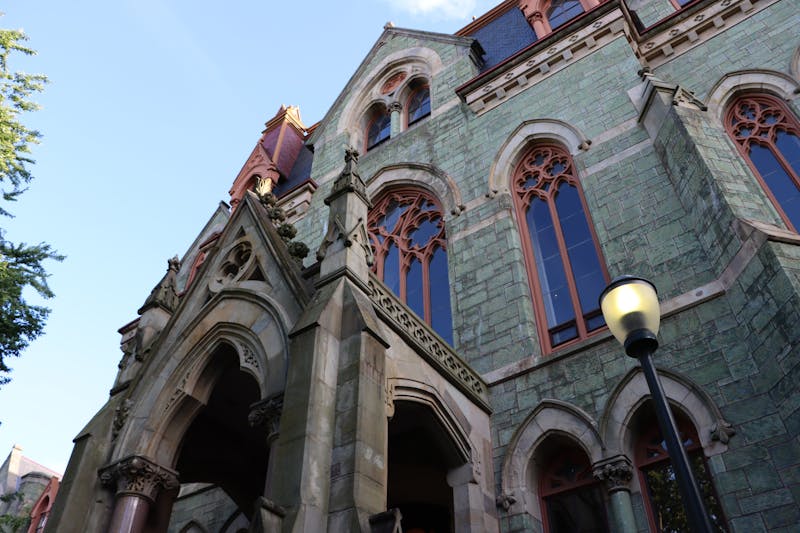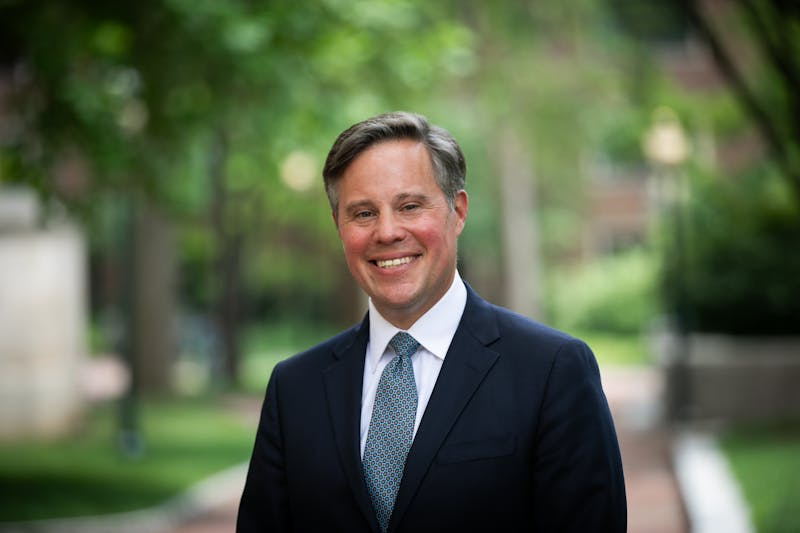While the Agenda for Excellence outlines several specific goals for improving the University, there is one goal that underlies all of them -- making money. Strategic Goal number nine sums it up best, stating that "the University will identify and secure the funds required to support its strategic goals." This goal addresses both the need for Penn to raise money, as well as to cut current costs. "The overwhelming majority of initiatives require resources, Vice President for Budget and Management Analysis Michael Masch said. "They also require a vision, but eventually you have to add the resources," At the heart of all the Agenda's money-making schemes was fundraising. Over the course of the past five years, gifts and pledges alone have brought in more than $903 million. For almost every goal outlined, more than half of the money needed to finance different projects was provided by this nearly $1 billion sum. But that means still leaves some money to be raised. "We anticipated a need, that in about seven years, we would have to raise $1 billion," Vice President for Development and Alumni Relations Virginia Clark said. "Gifts have been coming in at a faster rate than expected," she added, noting that in only five years almost all of Penn's $1 billion target has been raised. "The alumni feel exceedingly good about Penn, and they have responded in terms of giving," Clark said. At the inception of the Agenda, the Department of Development and Alumni Relations was concerned that alumni and other donors would be hesitant to keep giving after the extensive Campaign for Penn fundraiser, a seven-year campaign that culminated in 1994. The Campaign for Penn raised $1.4 billion, "which was a real record for the University... and my intention is not to minimize the importance of that campaign," Clark said. But more than twice the volume of gifts to the University were given in the last five years than in the entirety of the seven-year Campaign for Penn, although the Campaign ultimately raised more money overall. "Donors have been responding specifically to the strategic plan," Clark said. "[University President Judith Rodin] and this plan have been a terrific fundraiser." Many University officials have noted that Rodin has been more successful at convincing alumni and friends to give than her predecessors. "[The Agenda] is a strong program that [Rodin] was able to leverage up," Clark said. "We have a very strong president, who provides a very strong base for this fundraising," she added. Rodin said effective long-term planning helps explain why Penn's fundraising efforts have succeeded. "We think the reason is that alumni and donors were galvanized by the strategic plan and they supported it," she said. There were several projects that alumni responded to in particular, including undergraduate financial aid and scholarships, Perelman Quadrangle, the Pottruck Fitness Center, Huntsman Hall and the Fox Leadership Series. Clark noted that donors, especially younger alumni, gravitated towards these projects because they could see the immediate impact of their money. "As long as they can see that [impact], they're willing to give," Clark said. "Younger alumni are getting more involved... some giving over $5 million," she added. "These are big gifts for younger alumni, but the University has been spending time to reach out to them." And a favorite of young donors seems to be the financial aid endowment and scholarships -- but the University fell short of raising as much as it had hoped. The Agenda's goal for undergraduate financial aid was $200 million, of which $131 million has been raised. Rodin had often cited financial aid as the University's top fundraising priority. Financial aid has been a sensitive issue for Penn, as its financial aid endowment is the lowest in the Ivy League. Masch said that Penn's endowment struggles have a long history. He said that, while schools such as Harvard, Yale and Princeton universities have a long history of only accepting the very affluent, Penn started out as a working-class institution. And even though all of these schools now accept students based upon their merit, Harvard, Yale and Princeton have been building large endowments based on donations from rich alumni for a long time. "Penn's endowment 25 years ago was much smaller than it is today," Masch said. "In the '70s, '80s and '90s Penn was able to succeed in raising the endowment significantly." "But these other institutions have a 100-year head start," he added. "In terms of new gifts we're very competitive, but we can't erase that history." But while the endowment certainly impacted Penn's ability to offer financial aid, University administrators maintained that the small endowment did not impact the other strategic goals of the Agenda. Masch noted that Penn is not the only institution having endowment troubles in the context of its larger peer group. "A lot of attention was given to Princeton's increase in financial aid, and now other institutions are following suit, but no one else could afford to do what they did," he said. The size of the endowment also came to affect this year's 4.9 percent tuition hike. "We held off on doing [this year's] increase as long as we possibly could," Masch said. But the time had definitely come. Over the last four years, Penn's rate of increase has remained low compared to most of its peer institutions. But those schools that have been able to maintain low rates of tuition increase also happen to be those that are most heavily endowed, like Harvard, Yale and Princeton. Rodin's plan seems to have impacted even those out of the University's radar. Since the Agenda's inception, several large donations also came from outside sources -- such as major corporations and foundations, instead of alumni -- to make some of the larger projects initiated by the plan. The Huntsman Building, for example, received a boost in 1998 from Taiwanese industrialist C.F Koo, as well as the Salim Group, each of whom gave gifts of $10 million towards the project's $120 million cost. Two people -- Amos Hostetter and Ione Strauss -- both made significant contributions to the undergraduate financial aid endowment. Sam Zell, chairman of Equity Group Investments, provided program endowment for the Wharton Real Estate Center out of "professional respect" for the center, according to an Agenda statement. The Andrew W. Mellon Foundation and Ford Motor Company also gave generous gifts, to support writing programs in the School of Arts and Sciences and graduate fellowships, and to the School of Engineering and Applied Science, respectively.
The Daily Pennsylvanian is an independent, student-run newspaper. Please consider making a donation to support the coverage that shapes the University. Your generosity ensures a future of strong journalism at Penn.
DonatePlease note All comments are eligible for publication in The Daily Pennsylvanian.







